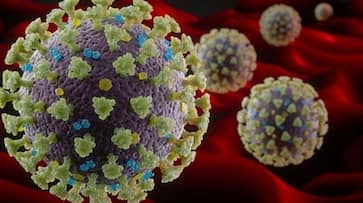Coronavirus: Here's health ministry's cluster containment strategy to break chain of COVID-19 spread
The government has drawn out a containment plan as clusters, posing a high risk of further spread of COVID-19 cases, have emerged in several states like Kerala, Maharashtra, Rajasthan.

The government has drawn out a containment plan as clusters, posing high risk of further spread of COVID-19 cases, have emerged in several states like Kerala, Maharashtra, Rajasthan, Uttar Pradesh, Punjab, Karnataka, Telangana, Delhi and Ladakh.
The cluster containment strategy would be to contain the disease within a defined geographic area by early detection of cases, breaking the chain of transmission and thus preventing its spread to new areas.
Also read: COVID-19-affected patients in India are in age group 21-40
Noting that local transmission will lead to clustering of cases in time and space, epidemiologically linked to a travel related case or a positive case that has links to a travel related case, the health ministry has drawn out a plan.
The ministry said with 211 districts now reporting COVID-19 cases, the risk of further spread remains very high.
India will follow a strategic approach for possible scenarios - travel-related cases reported in India, local transmission of COVID-19, large outbreaks amenable to containment, widespread community transmission of COVID-19 disease and India becomes endemic for COVID-19, the ministry said.
According to the document, "containment for large outbreaks through geographic quarantine strategy calls for near absolute interruption of movement of people to and from a relatively large defined area where there is single large outbreak or multiple foci of local transmission" of COVID-19.
Also read: Coronavirus: Tamil Nadu reports two more deaths
"In simple terms, it is a barrier erected around the focus of infection. Geographic quarantine shall be applicable to such areas reporting large outbreak and/or multiple clusters of COVID-19 spread over multiple blocks of one or more districts that are contiguous," it said.
The cluster containment strategy would "include geographic quarantine, social distancing measures, enhanced active surveillance, testing all suspected cases, isolation of cases, quarantine of contacts and risk communication to create awareness among public on preventive public health measures", the document stated.
As far as the evidence for implementing geographic quarantine is concerned, the document said that the "current geographic distribution of COVID-19 mimics the distribution of H1N1 pandemic influenza".
"This suggests that while the spread of COVID-19 in our population could be high, it''s unlikely that it will uniformly affect all parts of the country," the ministry said while stressing this calls for differential approach to different regions of the country, while mounting a strong containment effort in hot spots.
Large-scale measures to contain COVID-19 over large territories have been tried in China. Mathematical modelling studies have suggested that containment might be possible especially when other public health interventions are combined with an effective social distancing strategy, the document stated.
The ministry listed some of the factors affecting large outbreak cluster containment.
A number of variables determine the success of the containment operations through geographic quarantine which include the number and size of the cluster or clusters and also how efficiently the virus is transmitting in Indian population, taking into account environmental factors especially temperature and humidity, it said.
The factors also include public health response in terms of active case finding, testing of large number of cases, immediate isolation of suspect and confirmed cases and quarantine of contacts along with the geographical characteristics of the area.
According to the document, the authorities will do extensive contact tracing and active search for cases in containment zone, test all suspect cases and high risk contacts, isolate all suspect or confirmed cases, implement social distancing measures and intensive risk communication as part of the cluster containment strategy.
For large outbreaks amenable to containment, the documents stated that the strategy will remain the same but vary in extent depending upon spread and response to be mounted to contain it.
Geographic quarantine and containment strategy will include defining the area of operation, active surveillance for cases and contacts in the identified geographic zone, expanding laboratory capacity for testing all suspect cases, high risk contacts and SARI cases and operationalising surge capacities created for isolation (COVID-19 hospitals/blocks) to hospitalise and manage all suspect or confirmed cases.
It will also include implementation of social distancing measures with strict perimeter control, providing chemoprophylaxis with Hydroxychloroquine to all asymptomatic healthcare workers and asymptomatic household contacts of laboratory confirmed cases and further intensification of risk communication through audio, social and visual media.
In alignment with strategic approach, the document provides action that needs to be taken for containing a large outbreak. The actions for mitigation phase will be dealt separately under a mitigation plan.
"The objective of this plan is to stop the chain of transmission thus reducing the morbidity and mortality due to COVID-19," it said.
















